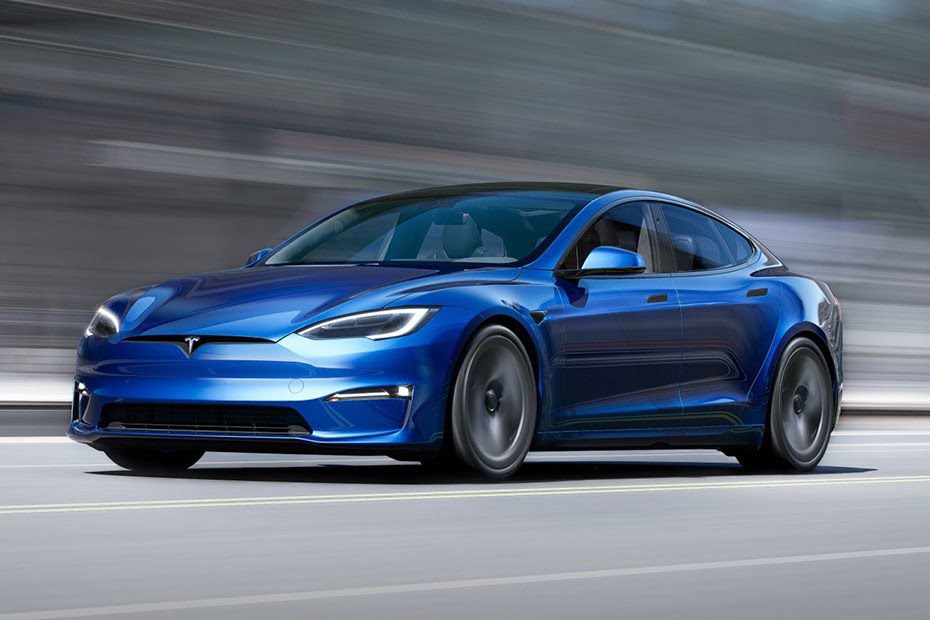Have you ever dreamt of embarking on an unforgettable EV road trip while contributing to a greener planet?
With the rise of electric vehicles (EVs) and the expanding network of charging stations, an electric vehicle road trip has become an exciting and eco-friendly adventure.
Let’s Explore the world of EV road trips and explore some of the best eco-friendly destinations in North America. So buckle up, charge your batteries, and get ready to explore!
Table of Contents
In recent years, electric vehicles have gained significant popularity due to their environmental benefits and technological advancements.
As more people embrace sustainable transportation options, the concept of an electric vehicle road trip has emerged as a unique and eco-conscious way to travel.
By planning your journey carefully and considering the charging infrastructure, you can embark on an adventure that combines sustainability with exploration.
Planning an Electric Vehicle Road Trip
To ensure a smooth and enjoyable electric vehicle road trip, careful planning is essential.
Let’s look at the key steps involved in preparing for your journey.
Choosing the Right EV
Before hitting the road, it’s crucial to choose an electric vehicle that suits your travel needs.
Consider factors such as range, charging capabilities, and cargo space.
- Range: The range of an EV is the distance it can travel on a single charge. This is an important consideration for road trips, as you don’t want to get stranded in the middle of nowhere. The EPA provides range estimates for all EVs, but it’s important to note that these estimates are based on ideal conditions. In the real world, your range may be lower, especially if you’re driving in cold weather or if you’re using the climate control system.
- Charging infrastructure: The availability of charging infrastructure is another important consideration. Not all parts of North America have the same level of charging infrastructure, so it’s important to plan your route in advance and make sure there are chargers available where you’ll be stopping. You can use a website like PlugShare to find charging stations.
- Size and comfort: If you’re planning on taking passengers or cargo on your road trip, you’ll need to choose an EV that’s big enough to accommodate your needs. You’ll also want to consider the comfort of the seats and the amenities offered, such as a sunroof or a premium sound system.
Few Popular EV Options for Road Trips
Models like the Tesla Model 3, Nissan Leaf, and Chevrolet Bolt EV offer impressive range and reliable charging options, making them popular choices among EV enthusiasts.

Tesla Model 3
The Tesla Model 3 is one of the most popular EVs on the market, and it’s a great choice for road trips.
It has a range of up to 358 miles, and it’s available in a variety of configurations, including a Long Range model with a range of up to 358 miles.
The Model 3 is also fast and comfortable, and it comes standard with a variety of features, such as a 15-inch touchscreen display and a premium sound system.

Tesla Model S
The Tesla Model S is a larger and more luxurious EV than the Model 3, and it’s also a good choice for road trips.
It has a range of up to 402 miles, and it’s available in a variety of configurations, including a Plaid model with a range of up to 390 miles.
The Model S is also fast and comfortable, and it comes standard with a variety of features, such as a 17-inch touchscreen display and a premium sound system.

Chevrolet Bolt EV
The Chevrolet Bolt EV is a more affordable EV than the Tesla models, and it’s a good choice for budget-minded travelers.
It has a range of up to 259 miles, and it’s available in a variety of configurations, including a 2023 Bolt EUV model with a range of up to 247 miles.
The Bolt EV is also comfortable and easy to drive, and it comes standard with a variety of features, such as a 10.2-inch touchscreen display and a six-speaker sound system.

Nissan Leaf
The Nissan Leaf is one of the first mass-produced EVs, and it’s a good choice for those who are looking for an affordable and reliable EV.
It has a range of up to 226 miles, and it’s available in a variety of configurations, including a 2023 Leaf Plus model with a range of up to 223 miles.
The Leaf is also comfortable and easy to drive, and it comes standard with a variety of features, such as an 8-inch touchscreen display and a six-speaker sound system.

Hyundai Kona Electric
The Hyundai Kona Electric is a great choice for those who are looking for an affordable and stylish EV.
It has a range of up to 258 miles, and it’s available in a variety of configurations, including a 2023 Kona Electric SE model with a range of up to 258 miles.
The Kona Electric is also comfortable and easy to drive, and it comes standard with a variety of features, such as an 8-inch touchscreen display and a six-speaker sound system.
No matter which EV you choose, be sure to do your research and plan your route in advance. With a little planning, you can enjoy a safe and enjoyable road trip in your EV.
Mapping the Route
Once you have your EV of choice, it’s time to plan your route.
Research the best roads, scenic routes, and attractions along the way.

Tools like electric vehicle trip planners and sustainable travel apps can help you identify charging stations and optimize your journey based on your vehicle’s range.
- Choose your destination. Start by choosing your destination. If you’re not sure where you want to go, you can use a website like Roadtrippers to find inspiration.
- Consider the range of your EV. Once you’ve chosen your destination, you’ll need to consider the range of your EV. The range is the distance your EV can travel on a single charge. You can find the range of your EV in the owner’s manual or on the manufacturer’s website.
- Plan your route. Once you know the range of your EV, you can start to plan your route. When planning your route, you’ll need to factor in the distance between your destination and the charging stations along the way. You can use a website like PlugShare to find charging stations.
- Allow extra time for charging. When planning your route, you’ll need to allow extra time for charging. It can take anywhere from 30 minutes to an hour to charge an EV.
- Be flexible with your itinerary. If you’re planning a road trip in an EV, it’s important to be flexible with your itinerary. If you get stuck in traffic or if there’s a long line at a charging station, you may need to adjust your plans.
Identifying Charging Stations
One of the critical aspects of an electric vehicle road trip is ensuring access to charging infrastructure.
Identify charging stations along your route and take note of their availability, charging speed, and network compatibility.

Services like PlugShare and ChargePoint provide comprehensive charging station maps and real-time information.
- PlugShare: This website and app have a comprehensive database of charging stations in North America. You can filter your search by location, type of charger, and other factors.
- ChargePoint: This company operates a network of charging stations across North America. You can use their website or app to find stations near you.
- Electrify America: This company is building a network of fast-charging stations across the United States. You can use their website or app to find stations near you.
Packing Essentials
When packing for an electric vehicle road trip, consider bringing along some essentials.
A portable charging cable, adapters for different charging networks, and a tire repair kit are handy items to have.
- Charger: This is an obvious one, but it’s important to make sure you have the right charger for your car. You can find chargers at most hotels and resorts, but it’s always a good idea to bring your own just in case.
- Charging cable: You’ll also need a charging cable to connect your car to the charger. Make sure the cable is long enough to reach from your car to the charger.
- Spare tire: Even though electric vehicles are more reliable than gasoline-powered cars, it’s still a good idea to bring a spare tire. This will save you a lot of hassle if you get a flat tire.
- Jack and lug wrench: You’ll also need a jack and lug wrench to change a flat tire. Make sure you know how to use them before you go on your trip.
- First-aid kit: A first-aid kit is always a good idea to have on hand, especially if you’re going to be spending a lot of time in remote areas.
- Flashlight: A flashlight is essential for emergencies, such as if you get stranded in the dark.
Top Eco-Friendly Destinations in North America for EV Road Trips
North America is home to a myriad of breathtaking destinations that offer a perfect blend of natural beauty and sustainable tourism practices.
Let’s explore some of the eco-friendly hotspots across the continent.

West Coast Wonders: California
California, with its diverse landscapes and progressive environmental policies, is a paradise for electric vehicle road trippers.
The iconic Pacific Coast Highway presents a scenic route with stunning coastal views.
Explore destinations like Big Sur, Monterey, and Santa Barbara, where you can recharge both your vehicle and your spirit.

Pacific Northwest Paradise: Oregon and Washington
The Pacific Northwest boasts lush forests, majestic mountains, and vibrant cities that are ideal for eco-conscious travelers.
Oregon’s Crater Lake National Park and Washington’s Olympic National Park are must-visit destinations.
Don’t miss the chance to explore Portland’s sustainable food scene or Seattle’s green initiatives.

Southwest Serenity: Arizona and New Mexico
The arid landscapes of Arizona and New Mexico offer a unique charm and an opportunity to connect with nature.
Visit the mesmerizing Grand Canyon, explore the vibrant city of Santa Fe, or take a road trip along the iconic Route 66.
Witness the beauty of the desert while knowing you’re treading lightly on the environment.

Northeast Adventures: Vermont and Maine
Escape to the Northeast and immerse yourself in the natural wonders of Vermont and Maine.
Vermont’s picturesque landscapes, including its stunning fall foliage, provide a serene setting for eco-friendly exploration.
On the coast of Maine, enjoy fresh seafood, charming coastal towns, and the breathtaking Acadia National Park.

Canadian Treasures: British Columbia and Quebec
Crossing the border into Canada, you’ll discover two provinces that are at the forefront of sustainable travel.
British Columbia is renowned for its breathtaking nature, from the coastal rainforests of Vancouver Island to the majestic Rocky Mountains.
In Quebec, explore the historic city of Montreal and venture into the beautiful Laurentian Mountains.
Embarking on an electric vehicle road trip through the best eco-friendly destinations in North America allows you to combine your love for travel with a commitment to sustainability.
By choosing an EV, planning your route carefully, and exploring eco-friendly destinations, you can enjoy a memorable journey while reducing your carbon footprint.
So pack your bags, plug in your vehicle, and set off on an electric vehicle road trip to explore the best eco-friendly destinations in North America!
Frequently Asked Questions
Planning an electric vehicle road trip involves choosing the right EV, mapping the route, identifying charging stations, and packing essentials. Researching EV trip planners and charging station networks can greatly assist in planning your journey.
The charging infrastructure for electric vehicles is rapidly expanding, and there are an increasing number of charging stations across North America. Services like PlugShare and ChargePoint provide up-to-date information on charging station locations.
Several electric vehicles are suitable for long-distance travel, such as the Tesla Model 3, Nissan Leaf, and Chevrolet Bolt EV. Consider factors like range, charging speed, and network compatibility when choosing an EV for your road trip.
In addition to the destinations mentioned in this article, other eco-friendly destinations in North America include Colorado’s Rocky Mountains, Utah’s national parks, and the eco-conscious city of Vancouver, Canada.
You can contribute to sustainable travel by choosing eco-friendly transportation options, supporting local businesses with sustainable practices, minimizing waste, and respecting the natural environment during your travels.







